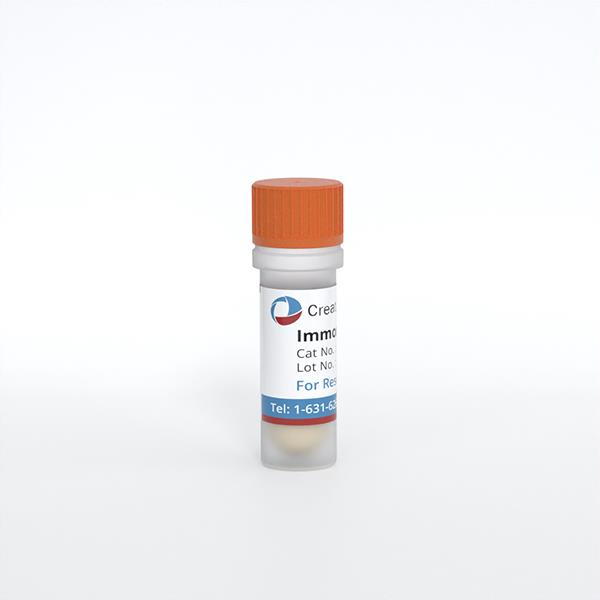
Immortalized (Conditionally) Rat Luteal Cells (GG-CL)
Cat.No.: CSC-I9215L
Species: Rattus norvegicus
Source: Corpora lutea
Morphology: Small and compact with low cytoplasm-to-nucleus ratio at permissive temperature; differentiated, flat monolayer appearance with increased cytoplasm-to-nucleus ratio at non-permissive temperature.
Culture Properties: Adherent
- Specification
- Q & A
- Customer Review
Cat.No.
CSC-I9215L
Description
The corpus luteum develops from an ovarian follicle during the luteal phase of the menstrual cycle and is responsible for the decidualization of the endometrium. The Immortalized Rat Luteal Cells (GG-CL) is conditionally immortalized through the temperature-sensitive simian virus (SV40 tsA209) and has retained many primary luteal cell markers such as estrogen receptor-β, glucocorticoid receptor (GR), interleukin-6 (IL-6), orphan nuclear receptor nur 77 and 20α-hydroxysteroid dehydrogenase (20α-HSD). In addition, GG-CL responds to stimulation by PRL, estradiol, and cAMP, making the cells a useful model for studies involving gene expression and regulation of luteal cells.
Species
Rattus norvegicus
Source
Corpora lutea
Culture Properties
Adherent
Morphology
Small and compact with low cytoplasm-to-nucleus ratio at permissive temperature; differentiated, flat monolayer appearance with increased cytoplasm-to-nucleus ratio at non-permissive temperature.
Immortalization Method
Serial passaging and infection by SV-40 tsA209 Temperature Sensitive Mutant virus
Markers
IL-6, ER-β, GR, 20α-HSD, JAK2
Application
For Research Use Only
Storage
Directly and immediately transfer cells from dry ice to liquid nitrogen upon receiving and keep the cells in liquid nitrogen until cell culture needed for experiments.
Note: Never can cells be kept at -20 °C.
Note: Never can cells be kept at -20 °C.
Shipping
Dry Ice.
Recommended Products
CIK-HT003 HT® Lenti-SV40T Immortalization Kit
CIK-HT004 HT® Lenti-SV40 (tsA58 temperature sensitive mutant) Lentivirus Immortalization Kit
CIK-HT004 HT® Lenti-SV40 (tsA58 temperature sensitive mutant) Lentivirus Immortalization Kit
Quality Control
1) Northern analysis and RT-PCR were used to confirm the expression of IL-6, glucocorticoid receptor (GR) , estrogen receptor-β (ER-β) and orphan nuclear receptor nur 77. 2) Cells were subjected to treatments of exogenous prolactin, estradiol, and cAMP to examine effects.
BioSafety Level
II
Citation Guidance
If you use this products in your scientific publication, it should be cited in the publication as: Creative Bioarray cat no.
If your paper has been published, please click here
to submit the PubMed ID of your paper to get a coupon.
Ask a Question
Write your own review
Related Products
Featured Products
- Adipose Tissue-Derived Stem Cells
- Human Neurons
- Mouse Probe
- Whole Chromosome Painting Probes
- Hepatic Cells
- Renal Cells
- In Vitro ADME Kits
- Tissue Microarray
- Tissue Blocks
- Tissue Sections
- FFPE Cell Pellet
- Probe
- Centromere Probes
- Telomere Probes
- Satellite Enumeration Probes
- Subtelomere Specific Probes
- Bacterial Probes
- ISH/FISH Probes
- Exosome Isolation Kit
- Human Adult Stem Cells
- Mouse Stem Cells
- iPSCs
- Mouse Embryonic Stem Cells
- iPSC Differentiation Kits
- Mesenchymal Stem Cells
- Immortalized Human Cells
- Immortalized Murine Cells
- Cell Immortalization Kit
- Adipose Cells
- Cardiac Cells
- Dermal Cells
- Epidermal Cells
- Peripheral Blood Mononuclear Cells
- Umbilical Cord Cells
- Monkey Primary Cells
- Mouse Primary Cells
- Breast Tumor Cells
- Colorectal Tumor Cells
- Esophageal Tumor Cells
- Lung Tumor Cells
- Leukemia/Lymphoma/Myeloma Cells
- Ovarian Tumor Cells
- Pancreatic Tumor Cells
- Mouse Tumor Cells
Hot Products
